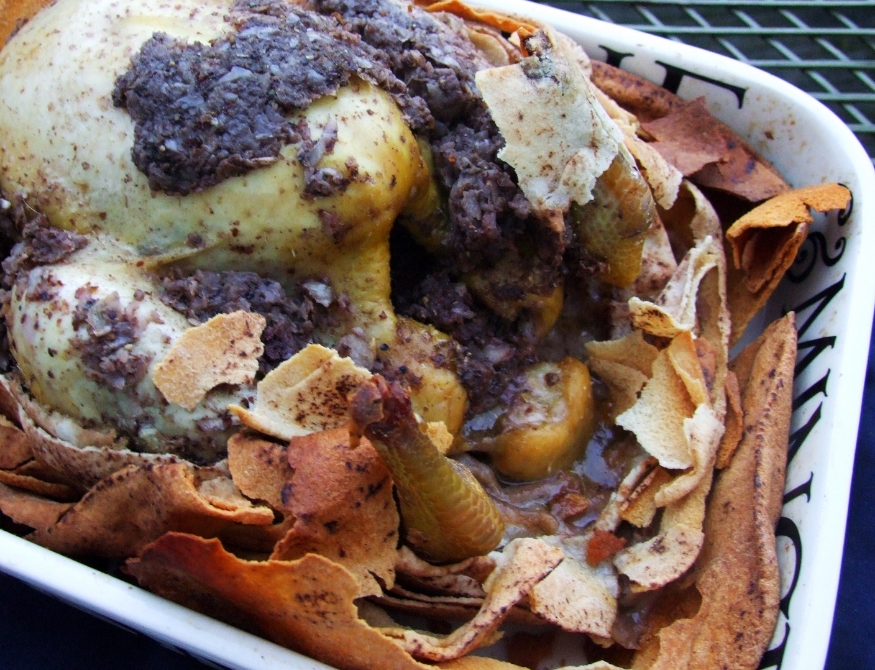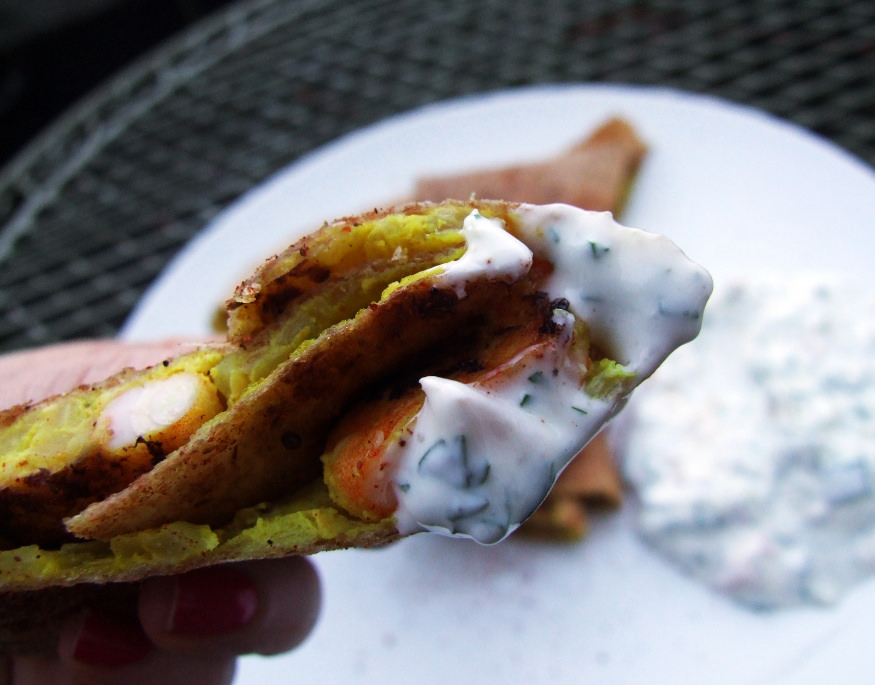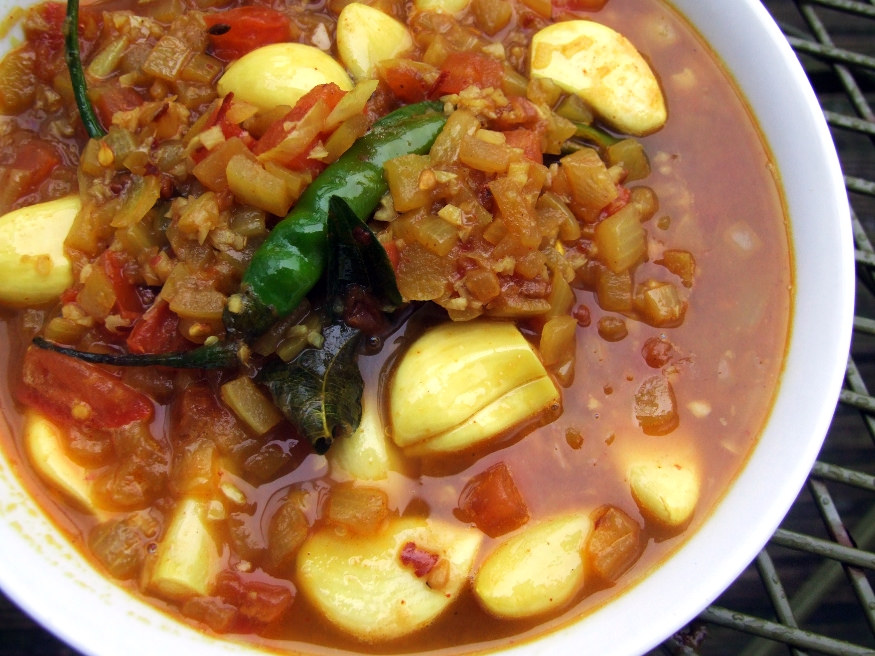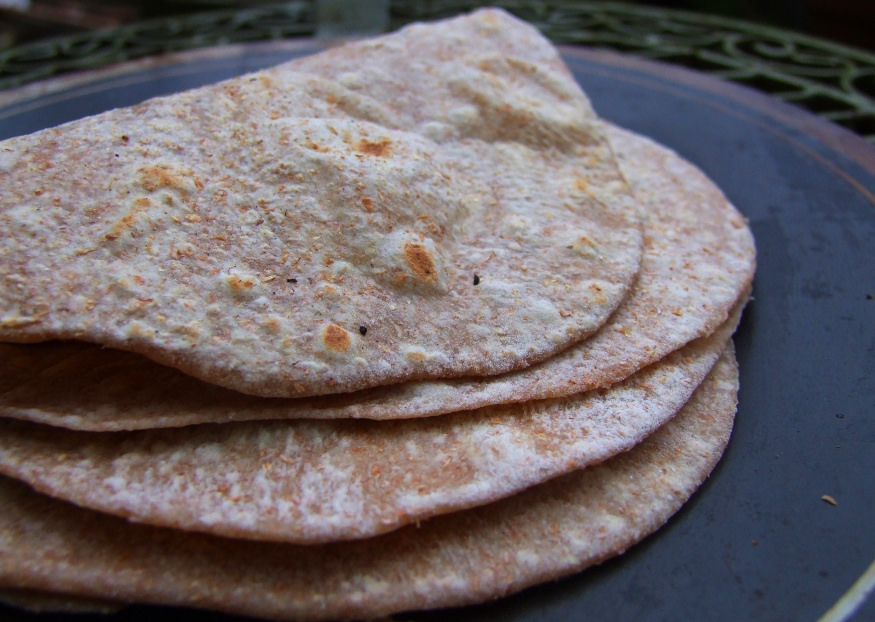
I found ‘A Tale of 12 Kitchens’ in Peckham Library. It was on my radar because the man who wrote it, artist Jake Tilson, is local, and the book has a section on Peckham. One of the recipes was this ‘mummified chicken’ – apparently so named by the author’s wife but Middle Eastern in origin and properly called ‘firakh mashwiya bi-al-summa’. You get your chook, smother it with a paste of blended onions and tart, lemony sumac and then stuff it inside a load of flatbread.
In the book, Jake suggests using Lebanese lavash flatbread, but when I went down to Persepolis in search of something suitable, Sally told me that Jake also buys his bread there and always uses this circular khobez, so I followed suit (we’re all tight in Peckham, you see). The bread splits apart very easily and has just enough room, handily, to hold a chicken. I stuffed it inside a double layer and then put a further two on in the opposite direction to make sure the bird was nice and cosy.
The whole thing is baked for 3-4 hours (depending on size) and although you are left with very crisp, inedible bread on top, the underneath is gooey with roasted chicken juices. We actually squabbled over the last few pieces of super savoury, unctuous, saturated khobez. The bird itself was incredibly succulent and flavoursome, having steamed and sizzled in its little enclosure. Jake suggests serving it with rice but a green salad worked perfectly well for us.
This dish would make excellent dinner party fodder. It’s really easy, you can leave it in the oven for ages and it has a ‘big reveal’ when you crack open the shell and the fragrant meaty steam puffs out. Just make sure you’ve got good mates round, because you will be fighting over those bread scraps, trust me.
Mummified Chicken or Firakh Mashwiya Bi-al-summa
(from ‘A Tale of 12 Kitchens’ by Jake Tilson)
2 large onions, grated
2 tablespoons sumac
1 tablespoon olive oil
salt and pepper
4 khobez breads or other suitable flatbreads
1 large chicken
Preheat your oven to 175C/Gas 4
Make a coarse paste with the onions, sumac, oil, salt and pepper and cover the chicken with it, inside and out. Grease a baking dish. Stuff your chicken inside your bread and put it in the dish, adding more bread as necessary until it is completely enclosed. You just have to do your best here. Cover it loosely with foil and bake for 3-4 hours, depending on the size of your chicken. You need to brush the top of the bread with water every now and then to stop it burning. It does go very crisp on top. Serve with pilau rice and/or salad.


